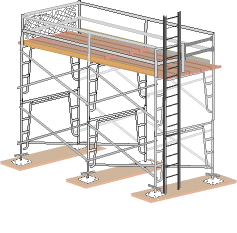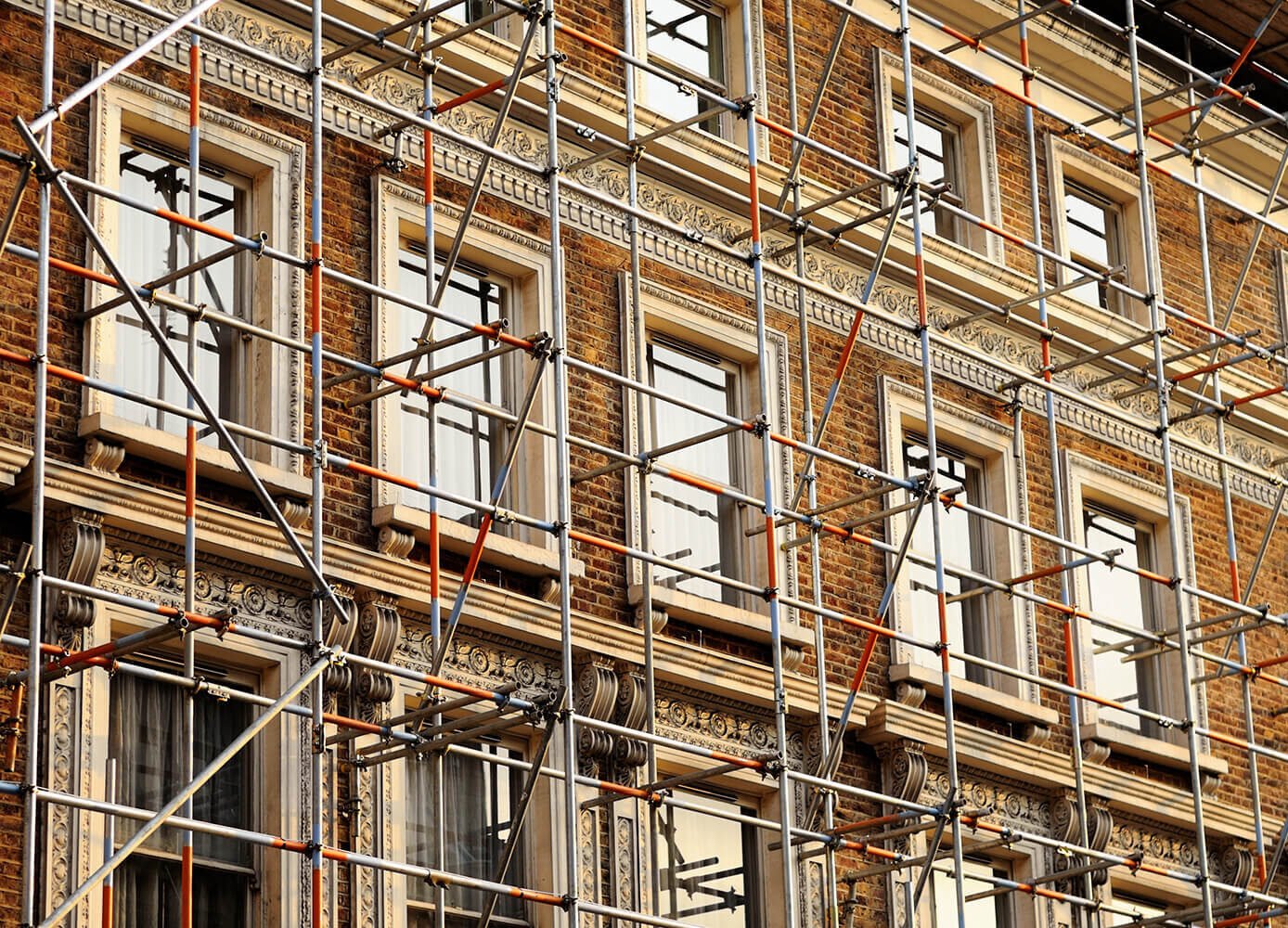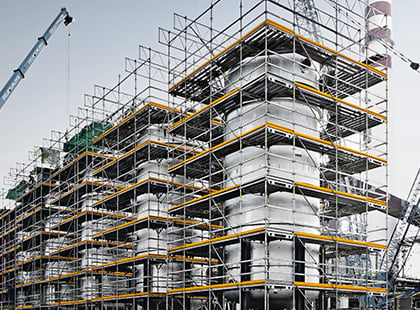Temporary Roof Scaffolding for Your Construction or Renovation Project
Temporary Roof Scaffolding for Your Construction or Renovation Project
Blog Article
A Comprehensive Guide to the Essential Features of Scaffolding in Modern Building And Construction
The landscape of contemporary construction significantly depends on reliable scaffolding systems that prioritize security, technology, and effectiveness. As projects grow in intricacy, recognizing the essential functions of scaffolding becomes important for making sure worker safety and security and maximizing job timelines. This overview explores numerous sorts of scaffolding, highlights vital security functions, and takes a look at product improvements that add to performance and sustainability. The ramifications of these components prolong far past mere building methods, motivating a better look at exactly how they affect general job success and worker wellness.
Kinds of Scaffolding
Although scaffolding systems can vary extensively in layout and application, they typically fall under several unique groups that cater to various construction demands - Scaffolding. One of the most common types consist of sustained scaffolding, suspended scaffolding, and rolling scaffolding
Sustained scaffolding includes systems supported by a structure of poles, which supply a raised and steady functioning surface. This type is typically made use of for tasks that call for considerable altitude, such as bricklaying or exterior paint.
Put on hold scaffolding, alternatively, is used for jobs needing accessibility to high elevations, such as cleansing or fixing structure facades. This system hangs from a rooftop or another structure, permitting employees to lower or increase the platform as needed.
Moving scaffolding attributes wheels that enable very easy mobility across a work website. It is specifically helpful for jobs that call for frequent relocation, such as interior operate in large spaces.
Each kind of scaffolding is designed with specific applications in mind, guaranteeing that building jobs can be accomplished successfully and successfully. Understanding these groups is vital for selecting the ideal scaffolding system to meet both project needs and website problems.
Key Security Functions
Security is paramount in scaffolding systems, as the possible risks connected with working at heights can bring about significant mishaps otherwise effectively managed. Trick safety functions are important to make certain the wellness of workers and the integrity of the building site.
Most importantly, guardrails are critical. These obstacles give a physical safeguard against falls, significantly minimizing the risk of major injuries. Additionally, toe boards are usually utilized to avoid devices and products from falling off the scaffold, protecting employees listed below.
An additional essential element is using non-slip surface areas on platforms. This function enhances hold, especially in damaging climate condition, thus decreasing the possibility of drops and slides. Accessibility ladders need to be securely positioned to promote secure entry and leave from the scaffold.
Routine evaluations and upkeep of scaffolding systems are additionally crucial. These assessments make certain that all components remain in great condition and operating appropriately, attending to any kind of wear or damage without delay.
Lastly, proper training for all personnel associated with scaffolding operations is vital to make certain that they recognize safety protocols and can identify potential threats. Scaffolding. Collectively, these attributes create a much safer working setting and significantly reduce dangers associated with scaffolding
Product Developments
Developments in material science have considerably affected the scaffolding market, boosting both safety and effectiveness in modern construction. The Source intro of high-strength steel and light weight aluminum alloys has actually revolutionized conventional scaffolding systems.
In addition, cutting-edge composite materials, such as fiberglass-reinforced plastics, have become practical choices. These products are immune to deterioration and environmental destruction, thus extending the lifespan of scaffolding systems, particularly in severe climate condition. Making use of such materials adds to decrease maintenance prices and makes certain regular efficiency with time.


Style Factors To Consider
Considering the complexities of modern-day building projects, effective scaffolding layout is critical to making sure both capability and safety. Design factors to consider have to encompass different variables, including lots capability, elevation, and the specific requirements of the building and construction site. Each project offers special difficulties, necessitating a flexible approach to scaffolding systems that can adapt to varying problems.
Architectural integrity is critical; as a result, engineers have to compute the lots that the scaffolding will certainly sustain, consisting of employees, products, and equipment. The choice of products plays a critical duty in guaranteeing the scaffolding can hold up against these loads while remaining sturdy and light-weight. Furthermore, the layout has to enable very easy accessibility and egress, promoting the smooth motion of workers and materials.
Safety features, such as guardrails and non-slip surfaces, must be integrated to minimize dangers of crashes. Moreover, the layout should take into consideration the surrounding environment, including possible dangers and surrounding frameworks. By attending to these design considerations, construction firms can enhance the efficiency of scaffolding systems and advertise a safer working setting, ultimately contributing to the general success of the task.
Maintenance and Examinations
The efficiency of scaffolding systems extends beyond preliminary style and application; continuous upkeep and normal assessments are essential to ensuring their proceeded efficiency and safety throughout the period of a project. Regular inspections should be performed by qualified workers to recognize any signs of wear, damages, or instability that could compromise the honesty of the scaffolding.
Maintenance methods should consist of regular checks of structural parts, such as structures, pop over to this web-site planks, and fittings, making sure that all aspects remain totally free and secure from corrosion or other deterioration. In addition, the performance of safety attributes, such as guardrails and toe boards, need to be evaluated to make certain compliance with safety and security laws.
Paperwork of all examinations and maintenance tasks is important for accountability and governing compliance. An organized method to record-keeping not just help in tracking the problem of the scaffolding but also gives essential evidence in case of an incident.
Ultimately, developing an extensive upkeep and assessment timetable will significantly lower the threat of mishaps and boost the overall security of the building and construction site. By prioritizing these techniques, visit construction managers can secure employees and support the job's honesty.

Conclusion
In conclusion, the important features of scaffolding in modern building and construction incorporate a series of vital elements, consisting of varied types, key safety devices, product advancements, and thoughtful style factors to consider. Highlighting safety via guardrails and non-slip surfaces, alongside innovations in products like high-strength steel, improves both performance and sustainability. Additionally, normal upkeep and evaluations are vital for ensuring architectural stability and safety and security on building websites, eventually facilitating reliable project implementation and promoting the wellness of workers.
The landscape of modern-day building and construction progressively relies on reliable scaffolding systems that focus on safety, development, and efficiency.Advancements in product scientific research have actually considerably influenced the scaffolding market, enhancing both security and efficiency in modern-day building and construction. On the whole, these product advancements not just boost the efficiency and safety and security of scaffolding systems yet likewise straighten with the market's press towards sustainability, as many modern materials are designed to be a lot more eco pleasant.
Taking into consideration the intricacies of modern-day building and construction jobs, efficient scaffolding style is critical to making certain both capability and safety and security.In conclusion, the vital functions of scaffolding in contemporary construction encompass a range of critical components, consisting of diverse types, vital safety and security systems, material innovations, and thoughtful layout factors to consider.
Report this page